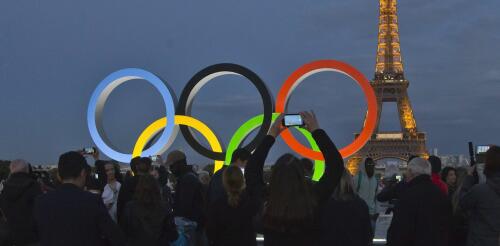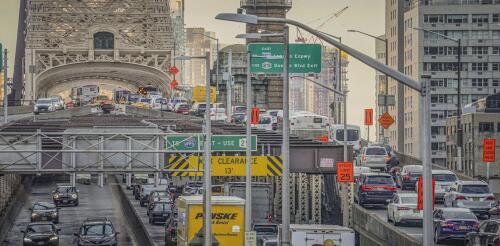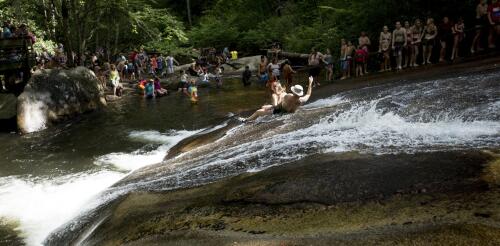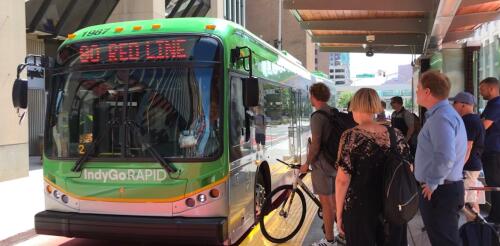Public transit
Europe is in the midst of a heat wave, and while Olympic athletes in Paris for the 2024 Summer Games might be spared the worst of it, the weather will still be hot. As global temperatures have risen, major sporting events like the Olympics and FIFA World Cup have had to adapt to high heat and extreme storms to keep athletes and fans safe and allow the games to go on. Olympic organizers have moved events such as marathons to early mornings and even to cooler cities. FIFA, the governing body for world soccer, pushed the 2022 Men’s World Cup back from its usual time in June to late November so it could be held in Qatar. Many of the Olympic events, such as beach volleyball, will be played outside in the heat. AP Photo/Thomas Padilla The heat risks and the environmental impact of major sporting events have led some people to question whether these events should be held at all. But as someone who st...
Since the 1940s, there has been a broad shift away from public transit across the U.S., and service has declined in many cities, including New York, Boston, Denver, Orlando and St. Louis. A look back at the last national mass transit boom helps explain the challenges that confront modern transit agencies. Starting in the 19th century, transit companies worked closely with real estate developers to develop “streetcar suburbs” for a growing population. The companies kept fares low, thanks to corporate consolidation, government regulation and thrifty management. During World War II, producing weapons and supplies for troops fighting abroad became the nation’s top priority. Gasoline, tires and autos were strictly rationed, so most commuters had few ways to get to work other than public transit. In Baltimore, for example, people could ride a streetcar anywhere in the city in 1943 for 10 cents. With wartime production booming, the city’s Baltimore Transit C...
New York City is poised to launch the first congestion pricing plan to reduce traffic in a major U.S. metropolitan area. Like many journeys in the Big Apple, this one has been punctuated by delays. Once the system starts up, however, it’s expected to significantly reduce gridlock in Manhattan and generate billions of dollars to improve public transit citywide. The basic idea is simple. To enter the Congestion Relief Zone, which covers Manhattan south of 60th Street, large trucks will pay $36, small trucks $24, passenger vehicles $15 and motorcycles $7.50. Ride-share vehicles and taxis will pay $2.50 and $1.25, respectively. Peak hours run from 5 a.m. to 9 p.m. on weekdays and 9 a.m. to 9 p.m. on weekends; overnight tolls are discounted by 75%. Evidence from cities around the world shows that charging motorists fees for driving into city centers during busy periods is a rarity in urban public policy: a measure that works and is cost-effective. Congestion pricing has succeed...
Outdoor recreation is on track for another record-setting year. In 2022, U.S. national parks logged more than 300 million visits – and that means a lot more people on roads and trails. While research shows that spending time outside is good for physical and mental health, long lines and gridlocked roads can make the experience a lot less fun. Crowding also makes it harder for park staff to protect wildlife and fragile lands and respond to emergencies. To manage the crowds, some parks are experimenting with timed-entry vehicle reservation systems and permits for popular trails. For all of their popularity, national parks are just one subset of U.S. public lands. Across the nation, the federal government owns more than 640 million acres (2.6 million square kilometers) of land. Depending on each site’s mission, its uses may include logging, livestock grazing, mining, oil and gas production, wildlife habitat or recreation – often, several of these at once. In con...
Public transit in the U.S. is in a sorry state – aging, underfunded and losing riders, especially since the COVID-19 pandemic. Many proposed solutions focus on new technologies, like self-driving cars and flying taxis. But as a researcher in urban policy and planning, I see more near-term promise in a mode that’s been around for a century: the city bus. Today, buses in many parts of the U.S. are old and don’t run often enough or serve all the places where people need to go. But this doesn’t reflect the bus’s true capability. Instead, as I see it, it’s the result of cities, states and federal leaders failing to subsidize a quality public service. As I show in my new book, “The Great American Transit Disaster: A Century of Austerity, Auto-Centric Planning, and White Flight,” few U.S. politicians have focused on bus riders’ experiences over the past half-century. And many executives have lavished precious federal capital doll...



